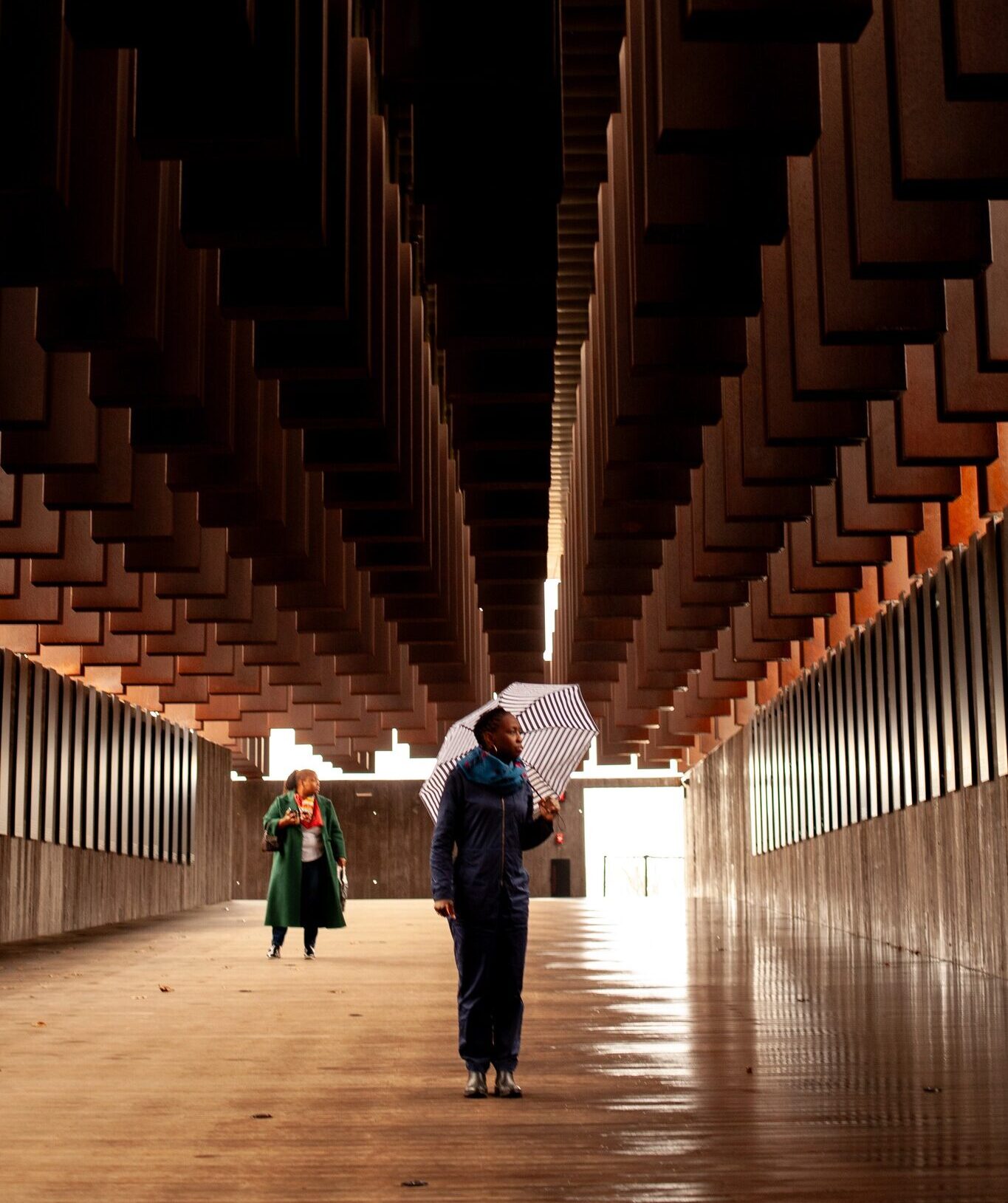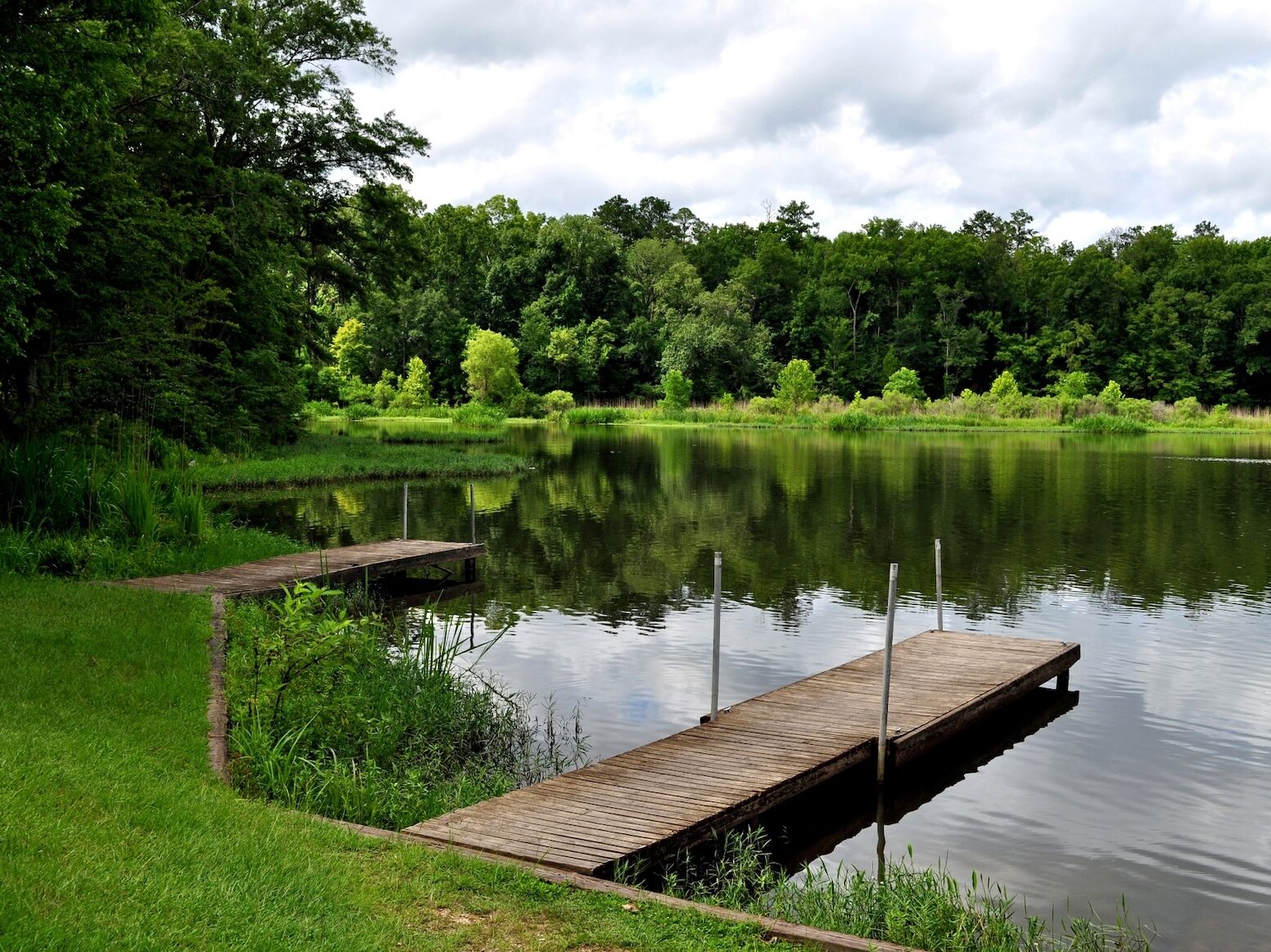A museum, a memorial, and a monument visually document the country’s history of racial injustice.
The trio of sites in Montgomery are known as Legacy Sites, comprised of The Legacy Museum, The National Memorial for Peace and Justice, and Freedom Monument Sculpture Park.
The Legacy Museum acts as the heart of the three sites, and details 400 years of historical accounts—from the transatlantic slave trade to the Civil Rights Movement to the present day’s mass incarceration. While painful, these stories powerfully detail the past in a way that compels every visitor to listen and to understand why this history must be faced—so that it will never be repeated.
Bryan Stevenson, founder and executive director of the Equal Justice Initiative, understands the importance of confronting injustice, as closely detailed in his 2014 bestselling book Just Mercy, which has since been adapted into a feature film. While his book powerfully describes the EJI’s work in preventing wrongful convictions, The Legacy Museum is a way for visitors to step into the narrative themselves and experience an immersive account of the country’s injustices.
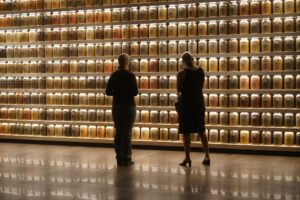
(The Legacy Sites/Facebook)
“The Legacy Museum is a narrative museum,” says Stevenson, in an interview with Art Forum. “Our priority was to create an experience where, at the end of it, a visitor will be moved to say, ‘Never again should we tolerate this kind of bigotry and bias.’”
As soon as you step into the museum, you are confronted with the grim reality of where you are and the atrocities of the transatlantic slave trade, as a brick wall reads when you enter: “You are standing on a site where enslaved Black people were forced to labor in bondage.”
Around the corner, a dimly-lit hallway of “holding pens,” like those used to restrain enslaved people, are represented with ghost-like holograms inside. Their words are taken from historical accounts of prisoners who were soon to be taken to the auction block in Court Square, just a few blocks away.
History’s timeline continues to unfold through the museum as visitors are confronted with countless stories of oppression and injustice throughout the past four centuries. One of the most visually impactful components of the museum is an immense wall containing over 800 jars of dirt from around the country, each representing a victim of a documented lynching.
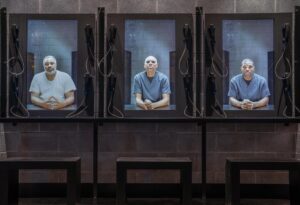
(The Legacy Sites/Facebook)
Tera DuVernay, the deputy director of the museum, wants to ensure that every visitor has a meaningful and educational experience—one of grief, perhaps, but pivotal in truly understanding the nation’s past. “The sites are filled with history that is very rarely taught,” she says. “The museum is filled with facts that surprise our visitors. Many people are surprised by the poll test and segregation laws.”
The poll test refers to an exhibit that features Jim Crow-era poll questions that were used to disenfranchise and humiliate voters. The museum has a mock voting room with a giant jar of jellybeans in front of the voting station. “How many jellybeans are in the jar?” the poll test reads. Another question asks how many seeds are in a watermelon.
Another area of the museum speaks to the continued work of Bryan Stevenson for criminal justice reform and racial disparities within the system. Wrongful convictions, excessive punishment, the incarceration of children, and abusive and dangerous prison conditions are all addressed in this portion of the museum. In the “prisoner gallery,” visitors can sit face-to-face with the likeness of an incarcerated person, pick up the phone, and listen to their story.
The museum’s final space provides a stark contrast to the previous rooms. Peaceful and serene, the “reflection room” invites guests to sit and absorb the accomplishments of hundreds of activists, whose pictures surround all four walls against a golden backdrop and gilded ceiling.
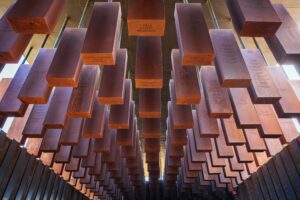
(The Legacy Sites/Facebook)
Once visitors exit the museum, they are invited to take the museum shuttle to The National Memorial for Peace and Justice, the country’s first comprehensive memorial dedicated to the more than 4,400 victims of racial terror lynchings. Their names are engraved on 800 suspended steel columns, each representing a county where lynchings took place. The memorial is not meant to comfort, but rather to confront—to face the grief in broad daylight and to wrestle with those emotions.
The third exhibit of the Legacy Sites trio, the Freedom Monument Sculpture Park, is a stunning addition. “The sculpture park honors the lives and memories of the ten million Black people who were enslaved in America and celebrates their courage and resilience,” says DuVernay. The 17-acre site sits along the very river where tens of thousands of enslaved people were trafficked and will contain works by more than two dozen sculpture artists.
A museum, a memorial, and a monument—filled with grief, sometimes rage and anger, but, nevertheless, necessary. Bryan Stevenson says it best, “We need to reckon with and acknowledge that history. I believe there’s something better waiting for us that feels more like freedom, that feels more like equality. And for us to get there, we’re going to have to talk about the challenges that we face.”
To learn more about The Legacy Sites, visit legacysites.eji.org.
